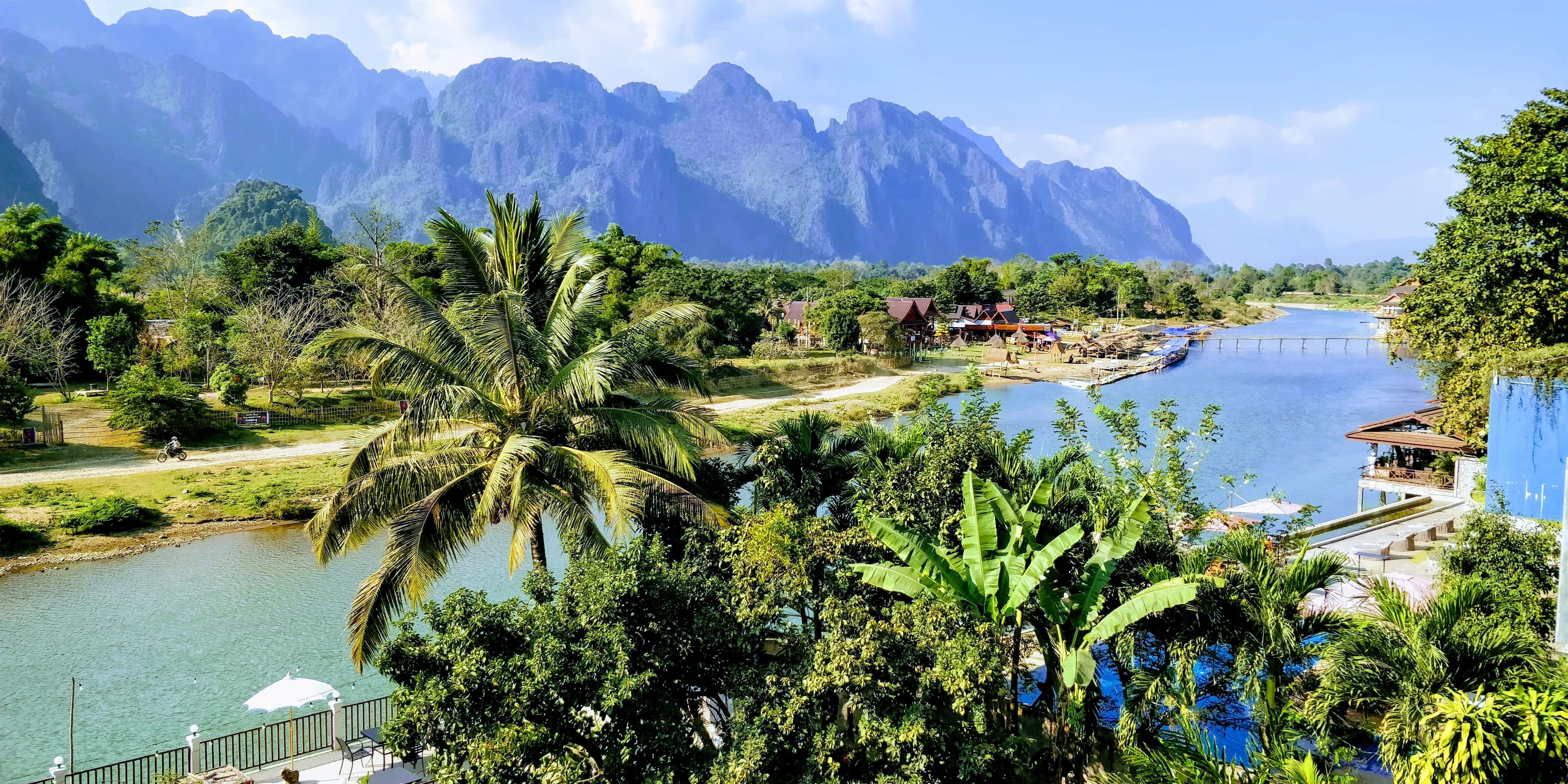
Our lowdown on Laos
Why visit Laos? This is what we love about the country.
Laos begins with Luang Prabang and Luang Prabang is a genuine Shangri-La. A jewellery box of twinkling mosaics and colonial shophouses, with colourful tuk-tuks parked on palm-fringed streets with rose-pink walls, and magnificent wats with sweeping, golden roofs – all of this glowing beneath the tropical sun.
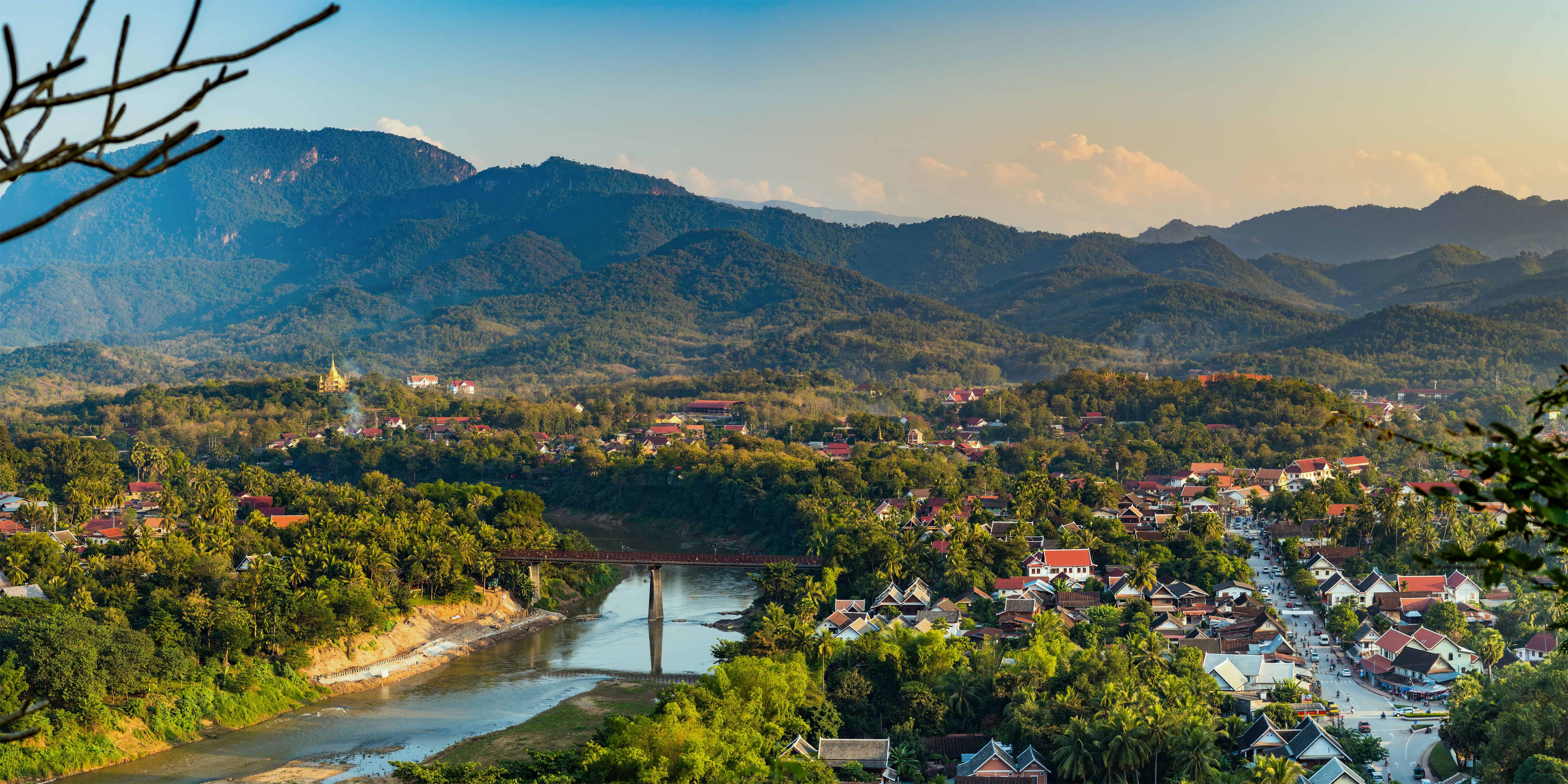
The capital of the kingdom of Lan Xang from 1353 until 1975, this was the heart of Lao culture for centuries.
Climb to the top of sacred Mount Phousi, a steep hill in the centre of town, and you’ll see that the town sits on a peninsula between the Nam Khan and the Mekong River, surrounded by lush rainforest as far as the eye can see. It’s hard to imagine a more beautiful location, and it’s a fantastic jumping-off point for further exploration — to little villages, impossibly blue jungle pools and waterfalls, and some of the best elephant sanctuaries in the world. It’s no surprise that so many are content to make Luang Prabang their only stop in Laos — but for us, the best is yet to come.
Laos is stunning. We can’t really stress that enough.
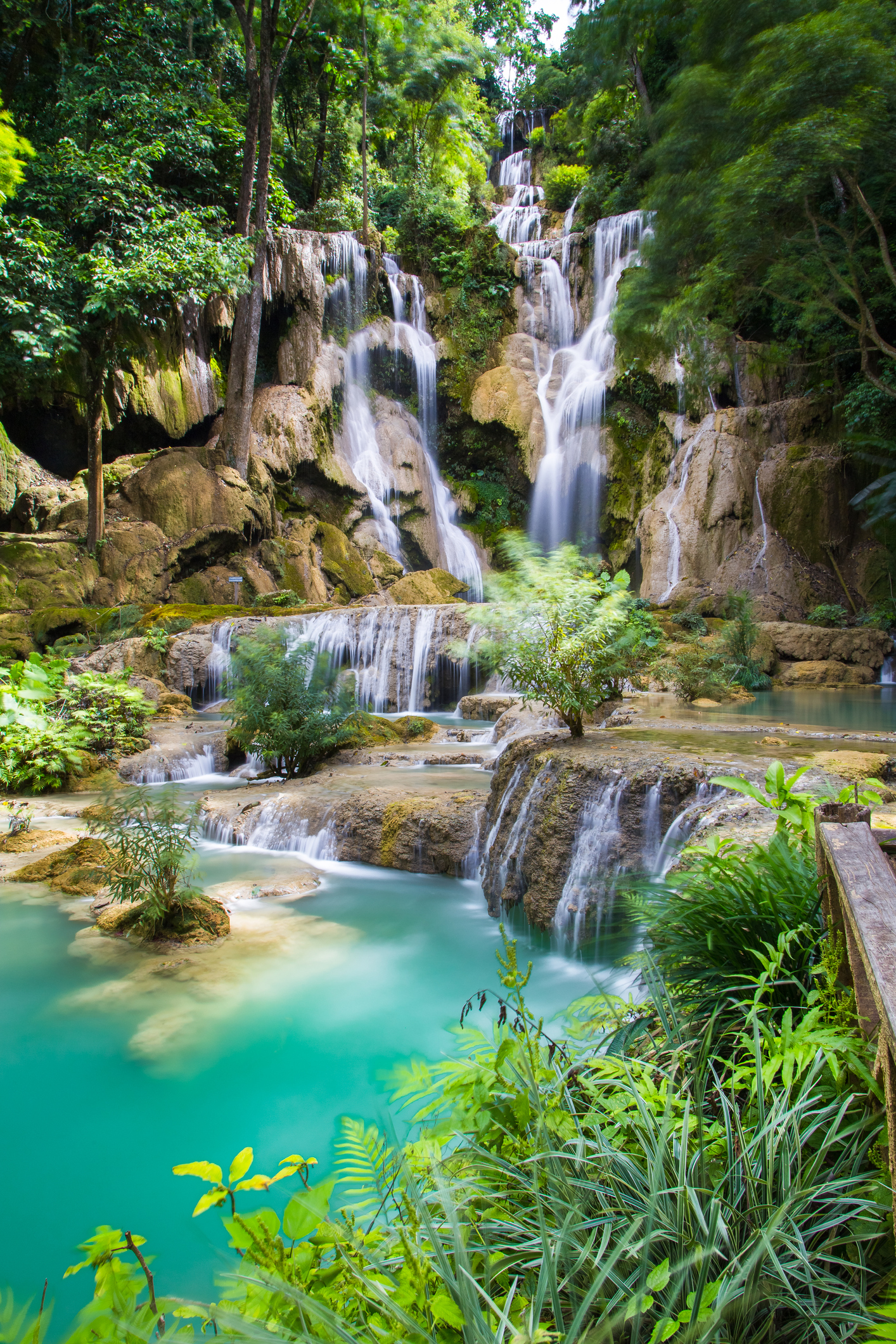
This country has some of the most beautiful scenery we’ve ever seen — and yet it sees a fraction of the tourists of any of its neighbours. We’re not really sure why. Perhaps it’s the bumpy roads, or the (sometimes) lumpy mattresses. Perhaps it’s because Laos doesn’t have a coastline, or lots of money to spend on its tourism industry. Whatever it is, we don’t care: we’d trade it all in an instant for the magical landscapes.
Picture that quintessential Asian mountain terrain of jagged, near-vertical limestone peaks: wonderfully lush and wound through with rivers. You’re picturing Laos. It’s a landscape made for exploring, whether it’s kayaking between the cliffs on the Nam Ou River at Vang Vieng, or trekking and climbing into the mountains outside Nong Khiaw. Nowhere else in Southeast Asia has so many opportunities for adventure, in such outstanding natural surroundings.
With so much natural beauty to explore, you might well wonder — where do you begin?
For us, the question isn’t “where?” but “with what?” Do you love dramatic karst scenery and adrenaline-fuelled adventure sports? Then maybe you start with a few days in Vang Vieng. Are you likely to be seduced by the slow-paced life of the countryside? Then perhaps you should plan your trip around the languid and less-visited south. Decide what kind of trip you want to have, and the locations will decide themselves. It’s all about knowing what you want to get out of your trip.
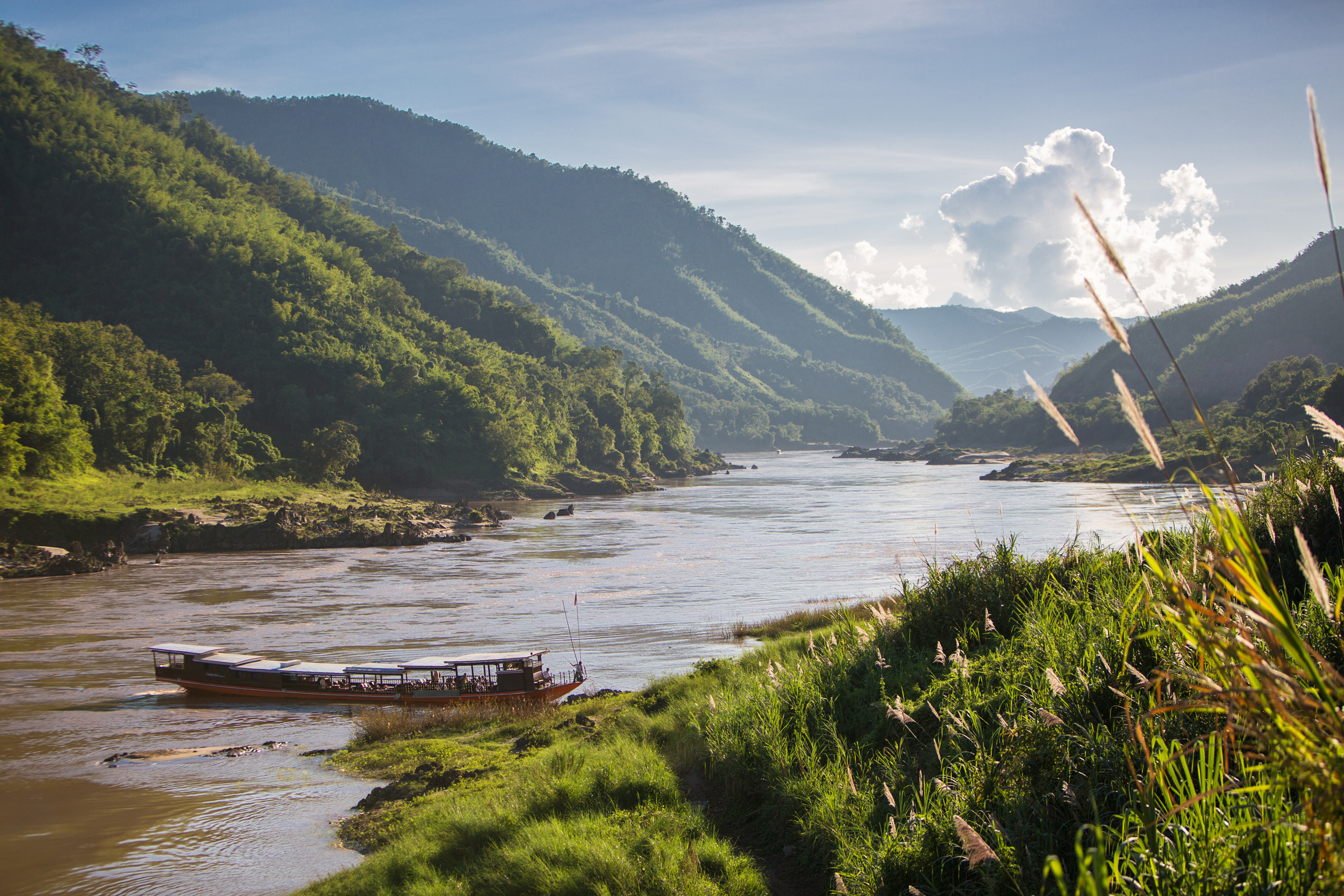
Roughly key-shaped and just a hair smaller than the UK, Laos’s borders are largely defined by the course of the Mekong in the west and the Annamite mountains in the east. Between these natural barriers, the country is overwhelmingly mountainous – about 70% to be precise – and it can be split into two distinct halves: north and south. The north is the cradle of Lao culture and history, with both former and current capital cities and a fairly well-defined tourist circuit; the south is less well-known, offering more remote and rural experiences and an enticingly languid pace of life.
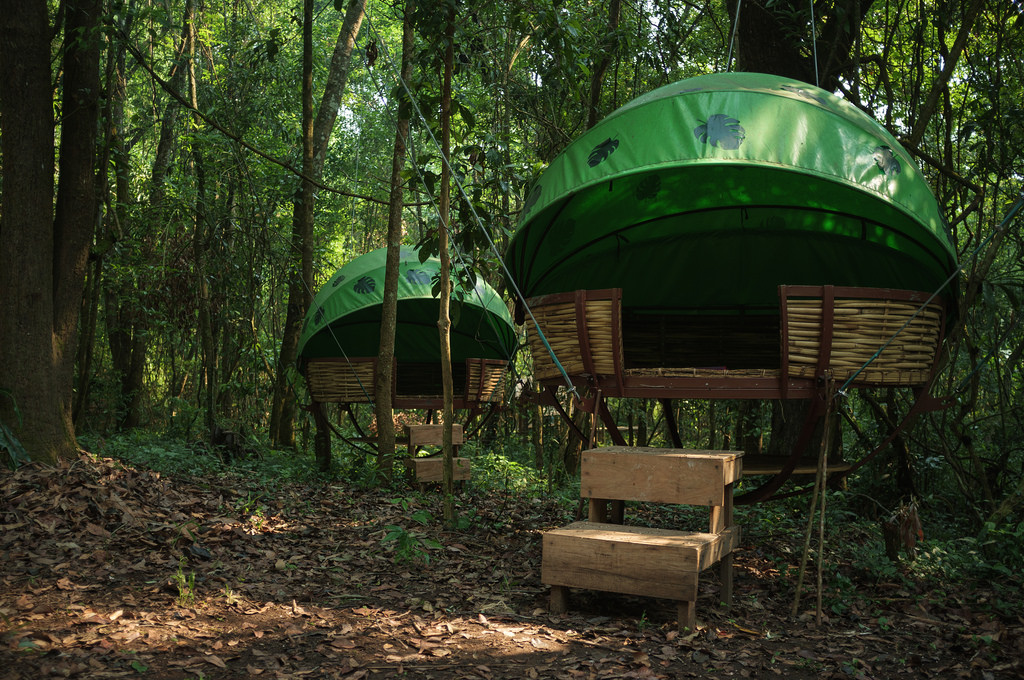
In the north, towards the border with Vietnam, there are vast protected areas of rainforest where you can go on night-time jungle safaris, sleep in “nests” hanging from the trees, and trek to remote locations in search of rare wildlife. Head southwards, meanwhile, and you’ll find Khmer-era temple ruins, coffee plantations, and easygoing, palm-fringed river islands.
Seeing both north and south is perfectly achievable within a two-week trip, but travelling by road can be long, rough and arduous. If that’s not your idea of fun, take a domestic flight. Do leave space for a few overland journeys, though. The best scenery in Laos is seen from the bumpy roads winding through the mountains, between rice terraces, through jungle and along lush river valleys.
It's not just its superlative scenery that makes Laos special.
Though it's one of the least populated countries in Asia, it’s also one of the most diverse. Nearly half the population belongs to an ethnic minority, and these groups have roots from all across Asia and Austronesia. Speaking languages from the Austro-Tai, Mon-Khmer and Sino-Tibetan families, they include all sorts of tribal subdivisions — including Hmong, Mien, Lisu, Lahu, Lolo, Akha, and Phu Noi. And that’s just for starters.
Though the Lao government officially recognises 49 ehtnic minority groups, it’s thought that there are actually more than 130. It means that everywhere you go, you’ll have opportunities to learn about different cultures and customs. Some of these people still live semi-nomadic lives in the mountains, moving from camp to camp to gather food. Others farm sesame and corn in the valleys. Still others are known for their wonderfully intricate silk weaving, beadwork, bamboo or rattan products.
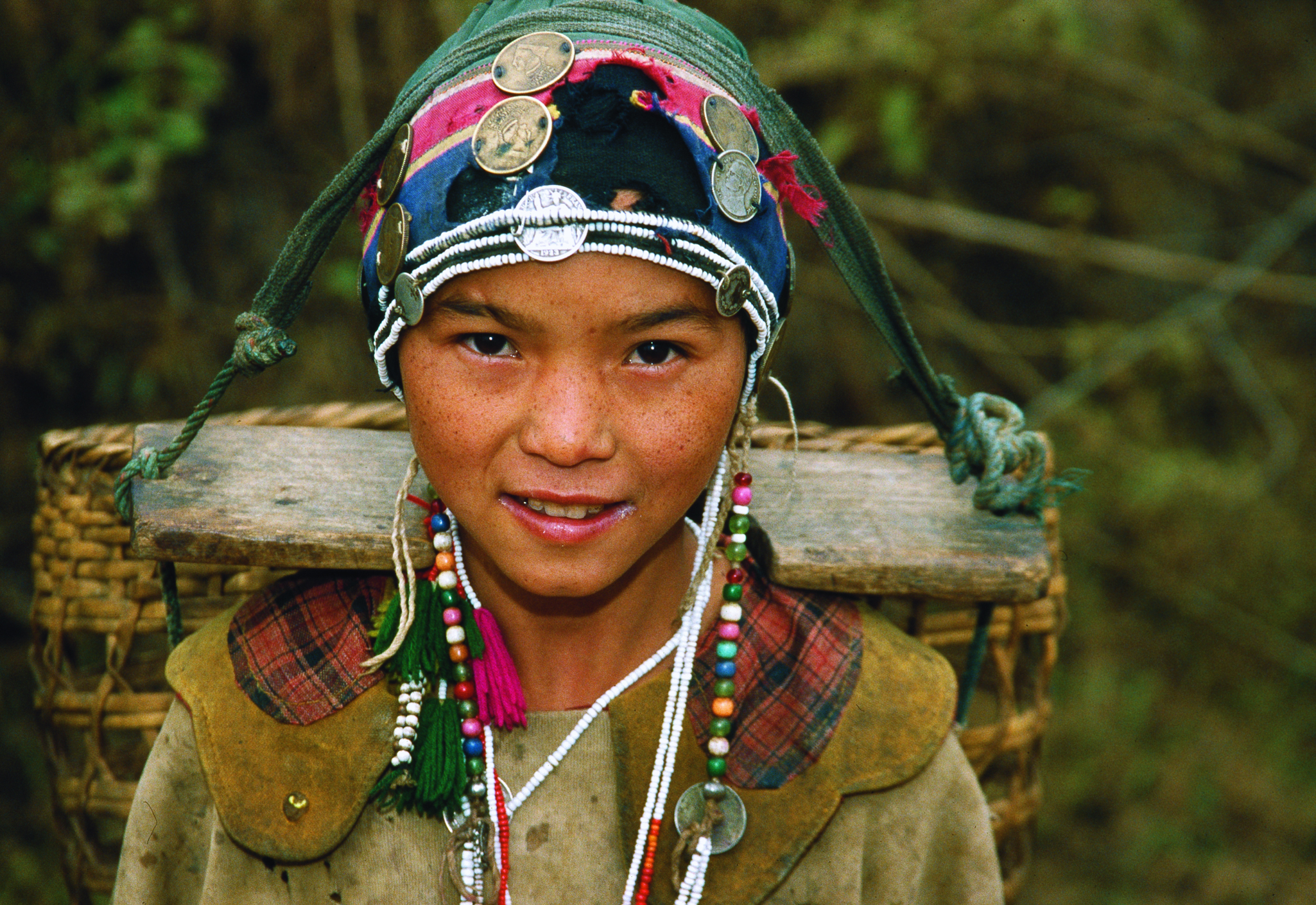
There are so few tourists in Laos that, outside of Luang Prabang, people are often as interested to meet you as you are to meet them.
The more rural you get, the friendlier people become, until you begin to feel a bit like a celebrity — endlessly being invited into homes and out to festivals, plied with rice wine, quizzed about your home country, and roped into games of petanque (a national obsession).
The largest ethnic group in Laos is the Lao Loum, or “Lowland Lao”, who make up just over half the population and live mainly in the cities and towns along the Mekong. The Lao Loum tend to be devoutly Theravada Buddhist, and their religion has shaped the dominant culture for centuries.
The Theravada school of Buddhism teaches that the future is dictated by karma, and that no amount of earthly stress or strain can change it. For the Lao, that means you might as well sit back and enjoy the ride. It’s a philosophy they call móoan: a term that loosely translates as “pleasure” or “fun”, and it’s why you’ll rarely find Lao people working too hard, losing their temper, or generally doing anything they don’t want to.
The móoan way of life means that while the industrious Vietnamese are busy getting their second rice-growing season underway, the Lao are out on their front porches sipping low-low rice whisky, shooting the breeze, and doing nothing more strenuous than a bit of fishing and cooking. The colonial French summed it up like this: “The Vietnamese plant the rice, the Cambodians tend the rice, and the Lao listen to it grow”. A little reductive, perhaps — but they weren’t a million miles off.
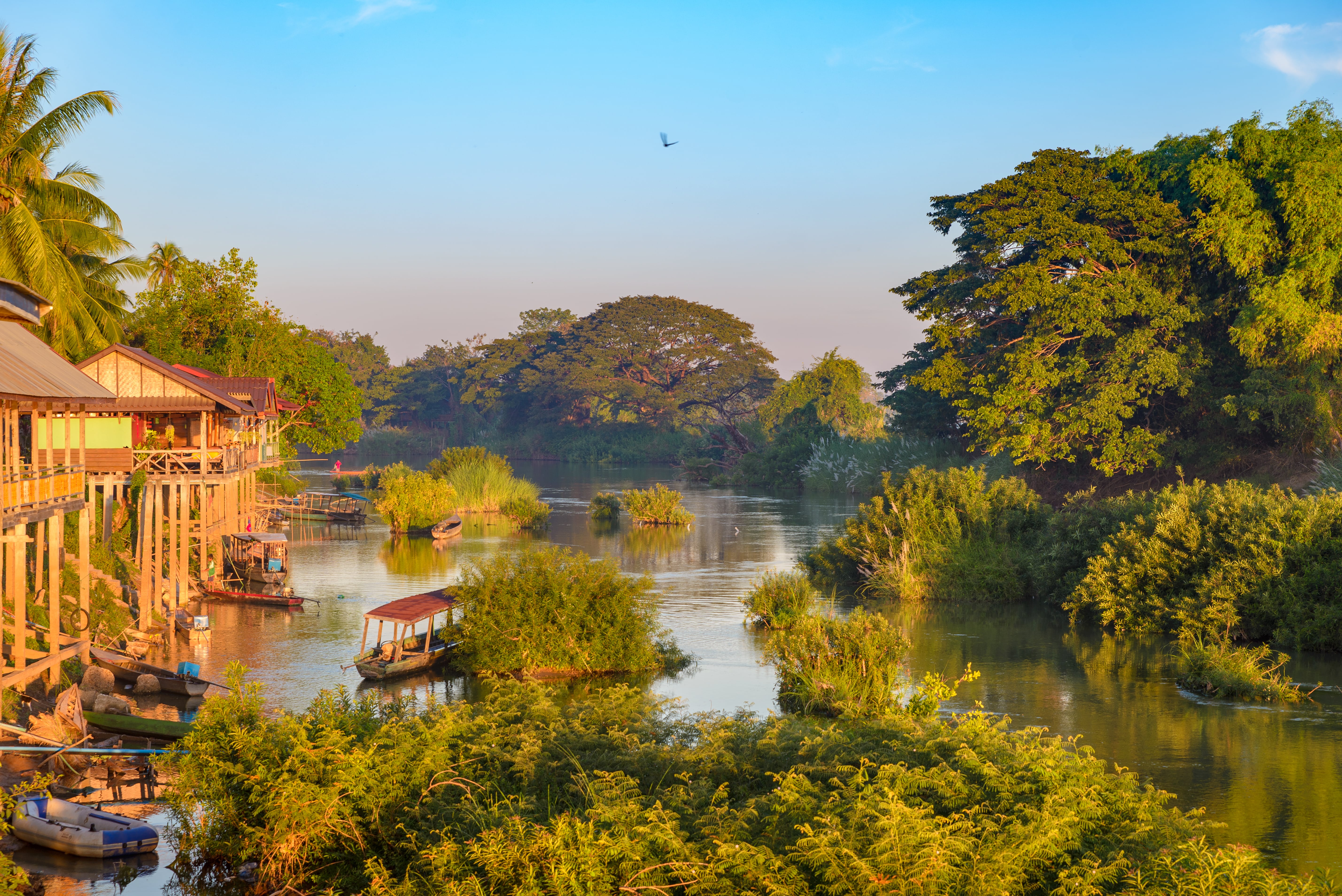
Living life at a dawdle does take some getting used to.
Take restaurants, for example. Don’t expect to get anything quickly, and definitely don’t
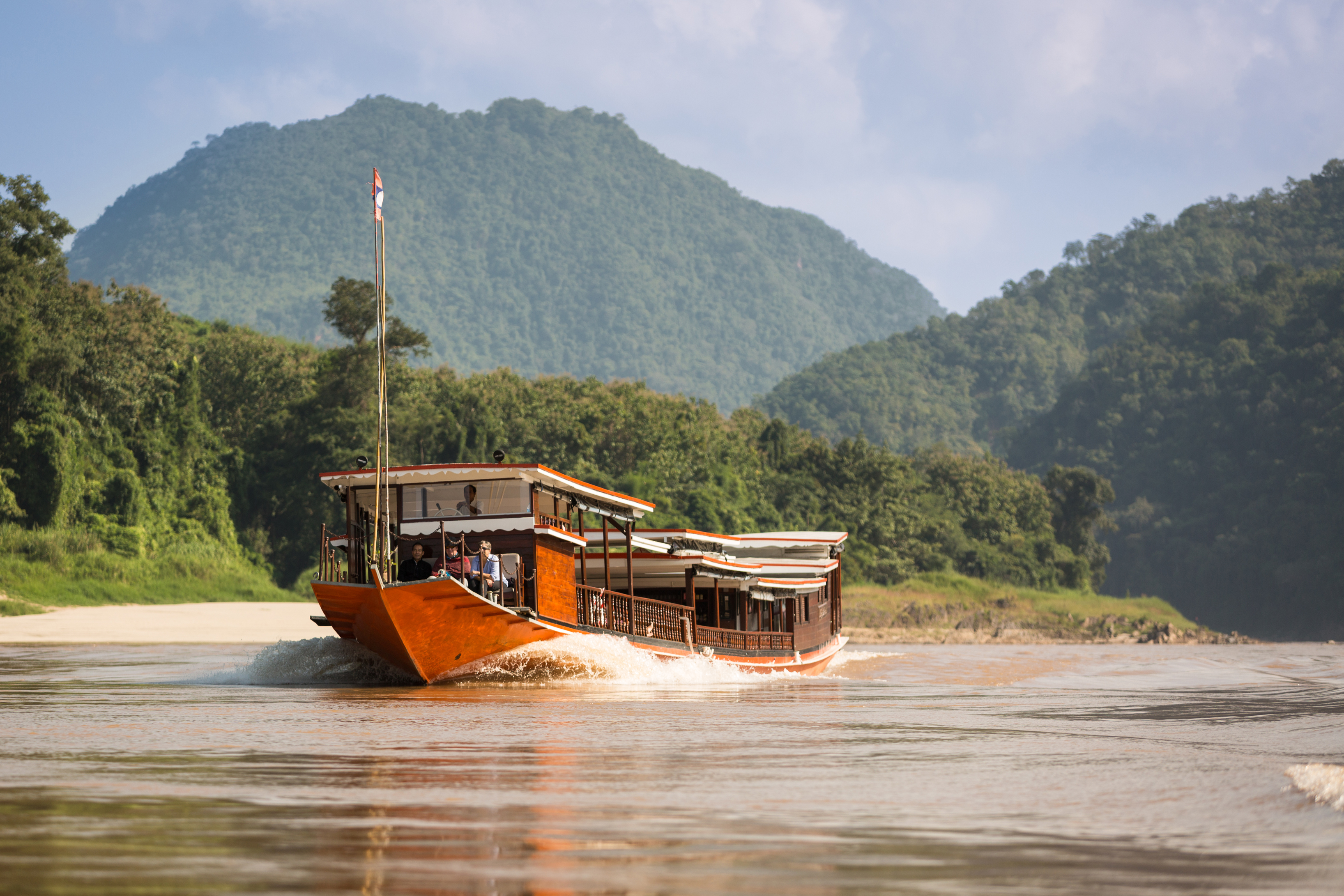
expect to get it all at the same time. In fact, apply that expectation to any service, journey, or interaction in Laos. It’ll happen when it happens (if it happens at all). It can be frustrating to begin with, but we find that once you’ve reset your internal rhythms to local time, it’s one of the great charms of travelling in Laos — and the ultimate antidote to stressed-out modern life.
For some, it’s tempting to see Laos’s laid-back attitude as a lack of ambition; as a resignation to lag behind the world and not think too much. It’s true that education has traditionally been undervalued here, and perhaps this móoan philosophy has had its part to play in slowing down progress in a country that’s still poorer and less developed than its neighbours. But whatever its deeper effects, we’re not qualified to judge. All we can say with certainty is that it’s a seductively chilled-out approach to life, and it makes Laos the easiest, breeziest, mellowest place imaginable to spend a couple of weeks.
